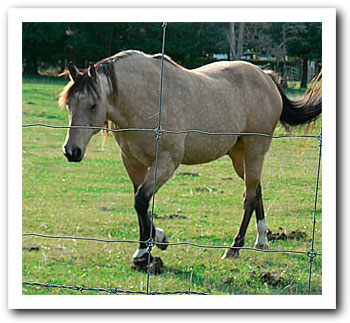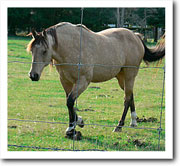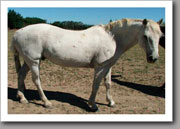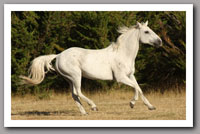Insulin Resistance
The problems covered on this website are all comparatively rare in horses that live on more mature, older, low fertility pasture or who live on predominantly hay diets even though they may spend most of their days confined to stables or pens.
There are plenty of examples of very healthy older horses still leading useful lives in their late 20’s and 30’s who have led confined lifestyles but had a predominantly hay diet.
Horses who, on the other hand, have been born and raised on vegetative pasture are more often than not, finished their useful life before they are 20. They frequently show signs of early aging with the onset of arthritis, dropped backs and Cushing’s disease.
Horses can be obese and metabolic or obese without being metabolic or metabolic without being obese.
Overview
Insulin Resistance (Metabolic Syndrome), Obesity and Grass Induced Laminitis.
Horses (& ponies) can be metabolic and not have laminitis.
Metabolic horses suffer ‘bouts’ of laminitis which coincide with a change in the grass, most notably two days after rain in spring and autumn.
Horses (& ponies) that show no outward signs of being either obese or metabolic can also get laminitis.
The horse on the right is both obese and metabolic. It is easy to see the cresty neck and the abnormal fat distribution: the pads of fat behind the shoulder, on the tail-head and sides of the rump, all give-away signs of ‘metabolic syndrome’ or insulin resistance.
It is easy to see the cresty neck and the abnormal fat distribution: the pads of fat behind the shoulder, on the tail-head and sides of the rump, all give-away signs of ‘metabolic syndrome’ or insulin resistance.
Horses in this condition are very prone to bouts of laminitis when the grass changes in spring and autumn and any other time of the year there is a flush of growth or a potassium spike after several consecutive cloudy days.
Danny Boy
 This grey horse (Danny) is metabolic but not obese. It is not obvious in this picture but you could see his ribs. He shows the signs of being metabolic, tight muscles, ‘stiff’ cresty neck, pads of fat, puffiness around bloodshot eyes.
This grey horse (Danny) is metabolic but not obese. It is not obvious in this picture but you could see his ribs. He shows the signs of being metabolic, tight muscles, ‘stiff’ cresty neck, pads of fat, puffiness around bloodshot eyes.
Sure enough he would get laminitis every time it rained - UNTIL he had six months on a high fibre, minerally balanced diet which included 60gms salt/day.

He is no longer ‘metabolic’, his movement is soft and fluid and, well into his twenties, he now loves to canter and play with the other horses.
Obese but not Metabolic

Tranquility, just back into work after some time off, is obese here, but shows no signs of being metabolic. She does not have a cresty neck, does not show any signs of abnormal fat distribution, and is not puffy around the eyes.
However, she is clearly an easy keeper and could easily become ‘metabolic’ if her diet isn’t managed carefully.
For tips on how to manage your pasture click here...
 Calm Healthy Horses
Calm Healthy Horses